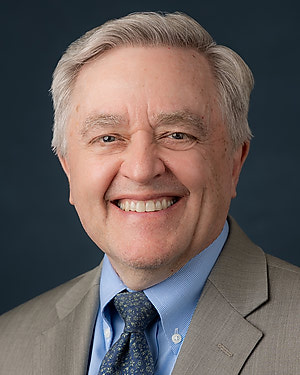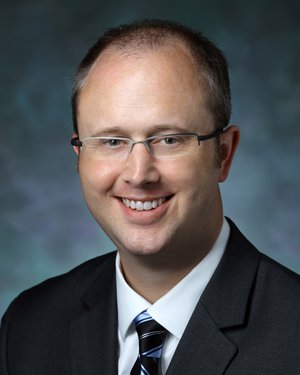Research Lab Results
-
Zeiler Stroke Recovery Lab
Improved acute stroke care means that more patients are surviving. Unfortunately, up to 60 percent of stroke survivors suffer disability in arm or leg use, and 30 percent need placement in a longer term care facility. Recovering motor skills after stroke is essential to rehabilitation and the restoration of a meaningful life. Therefore, there is an urgent need to develop innovative new approaches to rehabilitation. Most recovery from motor impairment after stroke occurs in the first month and is largely complete by three months. Improvement occurs independently of rehabilitative interventions (for example, physical and occupational therapy), which predominantly target function through compensatory strategies that do not constitute true recovery. Dr. Zeiler and his team are conducting research to uncover how to augment and prolong this critical window of time. -
Adam Sapirstein Lab
Researchers in the Adam Sapirstein Lab focus on the roles played by phospholipases A2 and their lipid metabolites in brain injury. Using in vivo and in vitro models of stroke and excitotoxicity, the team is examining the roles of the cytosolic, Group V, and Group X PLA2s as well as the function of PLA2s in cerebrovascular regulation. Investigators have discovered that cPLA2 is necessary for the early electrophysiologic changes that happen in hippocampal CA1 neurons after exposure to N-methyl-d-aspartate (NMDA). This finding has critical ramifications in terms of the possible uses of selective cPLA2 inhibitors after acute neurologic injuries. -
John Ulatowski Lab
Research in the John Ulatowski Lab explores the regulatory mechanisms of oxygen delivery to the brain and cerebral blood flow. Our work includes developing and applying new techniques and therapies for stroke as well as non-invasive techniques for monitoring brain function, fluid management and sedation in brain injury patients. We also examine the use of novel oxygen carriers in blood. We’ve recently begun exploring new methods for perioperative and periprocedural care that would help to optimize patient safety in the future. -
Jinyuan Zhou Lab
Dr. Zhou's research focuses on developing new in vivo MRI and MRS methodologies to study brain function and disease. His most recent work includes absolute quantification of cerebral blood flow, quantification of functional MRI, high-resolution diffusion tensor imaging (DTI), magnetization transfer mechanism, development of chemical exchange saturation transfer (CEST) technology, brain pH MR imaging, and tissue protein MR imaging. Notably, Dr. Zhou and his colleagues invented the amide proton transfer (APT) approach for brain pH imaging and tumor protein imaging. His initial paper on brain pH imaging was published in Nature Medicine in 2003 and his most recent paper on tumor treatment effects was published in Nature Medicine in 2011. A major part of his current research is the pre-clinical and clinical imaging of brain tumors, strokes, and other neurologic disorders using the APT and other novel MRI techniques. The overall goal is to achieve the MRI contrast at the protein and peptide level without injection of exogenous agents and improve the diagnostic capability of MRI and the patient outcomes.
-
Daniel Ford Lab
Research in the Daniel Ford Lab seeks to understand the relationships between depression and various chronic medical conditions. Recently, we've focused on depression and coronary artery disease as well as tactics for improving care for patients with medical comorbidity. Our research was among the first to document depression as a risk factor for myocardial infarction and stroke. Our team is also interested in exploring how information technology can be used to improve the care of patients with depression and tobacco abuse.
-
Dwight Bergles Laboratory
The Bergles Laboratory studies synaptic physiology, with an emphasis on glutamate transporters and glial involvement in neuronal signaling. We are interested in understanding the mechanisms by which neurons and glial cells interact to support normal communication in the nervous system. The lab studies glutamate transport physiology and function. Because glutamate transporters play a critical role in glutamate homeostasis, understanding the transporters' function is relevant to numerous neurological ailments, including stroke, epilepsy, and neurodegenerative diseases like amyotrophic lateral sclerosis (ALS). Other research in the laboratory focuses on signaling between neurons and glial cells at synapses. Understanding how neurons and cells communicate, may lead to new approaches for stimulating re-myelination following injury or disease. Additional research in the lab examines how a unique form of glia-to-neuron signaling in the cochlea influences auditory system development, whether defects in cell communication lead to certain hereditary forms of hearing impairment, and if similar mechanisms are related to sound-induced tinnitus. -
Kata Design Studio
We started Kata to bridge the gap between professional experiential production and neuroscience, clinical neurology, and medical hardware. We strive to build experiences and technology from the ground up, with a focus on mission, and at a level that is consistent with the best productions in the industry. We mirror the thousands of hours that go into a level design in a video game, but with the crucial difference that the focus is on the subtleties required for patient treatment or wellness. Our designs require high-frequency iterative development with patients and users in countless game-play sessions in which they provide crucial feedback. Characters have been painstakingly crafted to elicit profound emotional responses. Some of the requirements for patients or the elderly population in this space are qualitatively different from what is needed in the entertainment marketplace. That said we have also understood the critical artistic similarities. The core ethos of Kata is that the challenge of complex movement has profound benefits for cognition, wellness, and brain repair. Specifically, there is growing evidence that complex motor movement can have cognitive benefits that go beyond what has been reported for exercise alone. When designing experiences to treat motor impairments after stroke, maximizing rigorous and dynamic motor input is a requirement. New interactive technologies will allow people to engage in diverse and complex motor movements, even in the home, which was previously impossible. Overall it has been a very exciting journey, combining art, medicine, technology, and neuroscience. We continue to build, discover, and craft immersive experiences, side by side with physicians, physical therapists, and scientists, with the common goal of pushing clinical care and wellness forward. We believe this is only possible by having a mission focused design group embedded in an academic hospital. Ultimately, we wish to scale and perfect these innovations into other hospitals. Kata is a true hybrid of academia, and industry, doing what neither can do in isolation. We hope the ethos and design philosophy behind Kata provides the impetus for its expansion, partnerships, and growth. -
Marsh Lab
The Marsh Lab studies stroke treatment, recovery and risk identification. The Marsh Lab created the Hemorrhage Risk Stratification (HeRS) score to predict hemorrhagic transformation in patients treated with anticoagulants. Currently, the Marsh Lab is using magnetoencephalography (MEG) to investigate how strokes impact higher level cognitive processes. Additional research in the lab focuses on treatment options for reversible cerebral vasoconstriction syndrome (RCVS). -
Marek Mirski Lab
Work in the Marek Mirski lab explores the subcortical mechanisms of seizure propagation and cortical synchrony. The primary goal of our research is to develop methodologies for inhibiting seizures using site-specific subcortical electrical stimulation. Our identification of synaptically linked subcortical elements that contribute to seizure propagation has led to FDA-sanctioned phase III clinical trials to assess the use of targeted thalamic stimulation in patients with intractable seizures. We also conduct clinical research on the treatment of acute head injury, elevated intracranial pressure, cerebral edema, ischemic stroke and ICU sedation. -
Raymond Koehler Lab
Research in the Raymond Koehler Lab explores cerebrovascular physiology and cerebral ischemic injury caused by stroke and cardiac arrest, using protein analysis, immunohistochemistry and histology. We also study ischemic preconditioning, neonatal hypoxic-ischemic encephalopathy and the mechanisms of abnormal cerebrovascular reactivity after ischemia. We 're examining ways to improve tissue oxygenation and seek to better understand the mechanisms that connect an increase in cerebral blood flow to neuronal activity.








